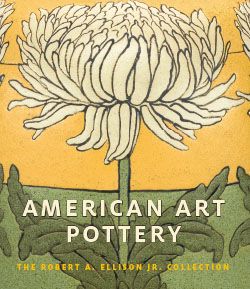Vase
Manufacturer Chelsea Keramic Art Works American
Designer Hugh C. Robertson
Steeped in ceramics from birth, Hugh C. Robertson pursued his craft with fierce devotion and a passion for experimentation. From a family of trained English ceramists, he honed his skills in New Jersey before settling in Massachusetts as one of the founders of Chelsea Keramic Art Works and later, Dedham Pottery. Robertson’s lifelong explorations in glazes, particularly their color and texture, make him one of the key figures of American art pottery at the turn of the twentieth century.
During the 1880s Robertson increasingly turned his attention to developing new glaze formulas and clay bodies. In the middle of the decade he became obsessed with the highly coveted yet elusive sang-de-boeuf, or oxblood, glaze, a quest that became the hallmark of his later career. This richly colored blood-red glaze is traditionally created from a copper-based formula and fired in a kiln, which when wet straw and other materials are introduced, deprives the atmosphere of oxygen and changes the copper-oxide glaze to a brilliant red color. While Chinese potters sporadically created the copper-red glaze in earlier centuries, it was not until the Ming Dynasty (1368– 1644) that ceramists refined the technique to yield consistently good color. However, production was disrupted shortly thereafter, and the secret lost. About 1680 the secret of copper-red glazes was regained, and its production continued through the eighteenth century. In April 1885 Robertson became the first American to successfully replicate the oxblood glaze. Justly proud of his accomplishment, he called the variations of his new glaze "Dragon’s Blood," "Sang de Chelsea," and "Robertson’s Blood." Robertson showcased his new oxblood glazes on the same Chinese-inspired shapes that he used for his monochrome glazes, demonstrated by this double gourd shaped vessel.
This vase is from the Robert A. Ellison Jr. Collection of American art pottery donated to the Metropolitan Museum in 2017 and 2018. The works in the collection date from the mid-1870s through the 1950s. Together they comprise one of the most comprehensive and important assemblages of this material known.
This image cannot be enlarged, viewed at full screen, or downloaded.
This artwork is meant to be viewed from right to left. Scroll left to view more.




